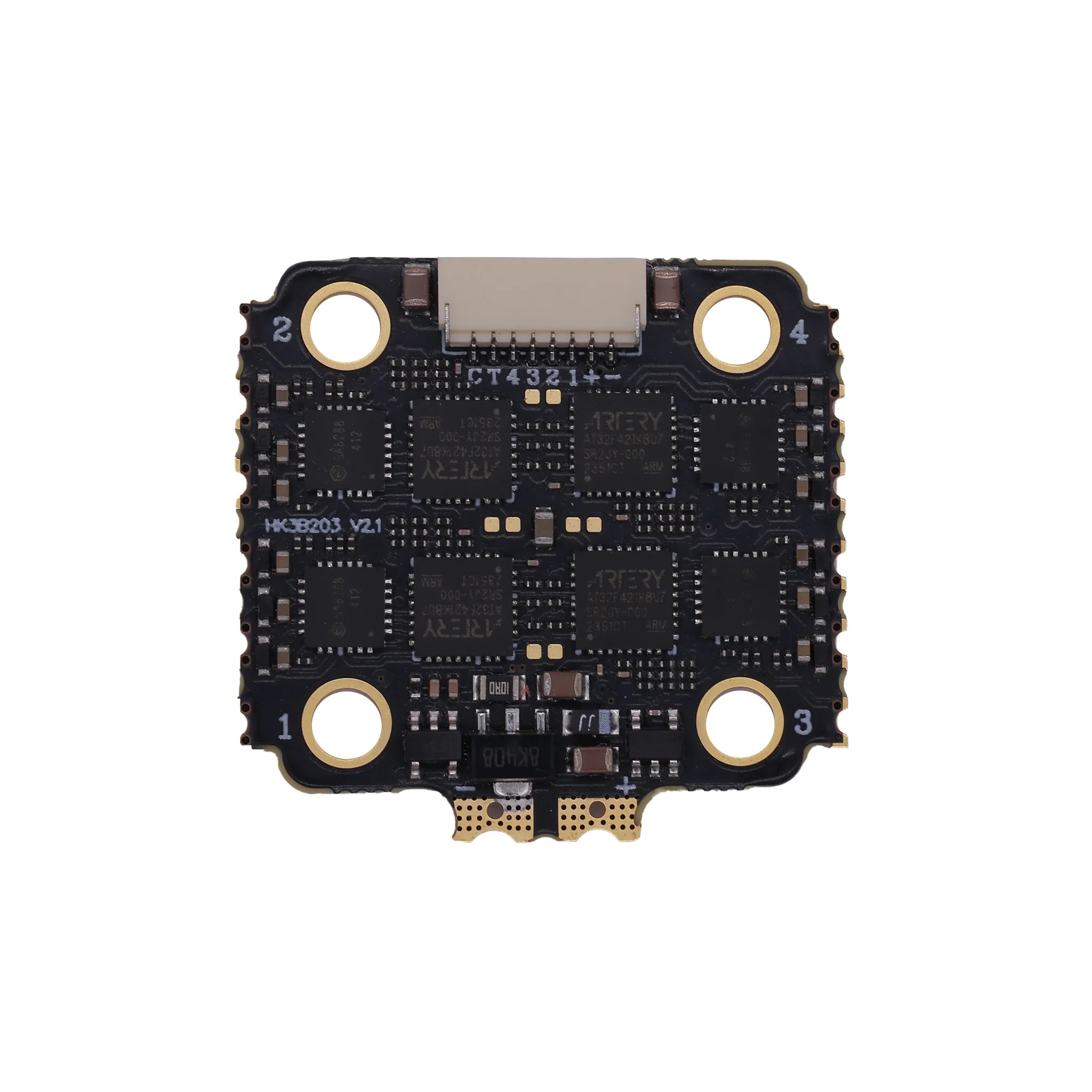When selecting a suitable flight controller product, flight style and practical needs are the core considerations. Different flight scenarios and operating habits impose significantly varying requirements on the functions and performance of flight controllers. Below is a detailed guide on matching flight controller products based on common flight styles and needs:
Beginner Entry: Prioritizing Stability and Ease of Operation
If you are new to FPV (First-Person View) racing drones, your core needs are stable flight and reduced operational difficulty—helping you avoid crashes caused by unskilled Manipulation In this case, you should focus on the flight controller’s self-stabilization capability and ease of use.
Core Functions: Prioritize flight controllers equipped with robust self-stabilization modes (e.g., Attitude Mode) and basic features like altitude hold. These functions help the drone maintain stability amid wind speed changes or unskilled operation, minimizing the risk of loss of control.
Software & Setup: Choose flight controllers paired with user-friendly software (such as simplified Betaflight or manufacturer-developed firmware). This software typically offers clear guided setup processes and preset parameter templates, allowing you to get started without complex debugging. For instance, some entry-level flight controllers include a built-in "Beginner Mode" that limits maximum tilt angle and speed, further lowering the learning curve.
|
|
HAKRC 4530V2 Flight controller
Sensors & Calibration: The sensors (especially gyroscopes and accelerometers) of beginner-friendly flight controllers do not require extreme performance, but they must ensure low noise and factory pre-calibration. This prevents flight instability caused by sensor drift.
Racing & Freestyle: Emphasizing Response Speed and Agility
Racing and freestyle flying demand exceptional real-time performance and processing speed from flight controllers. The controller must respond instantly to control commands to achieve precise positioning and high-speed maneuvers.
Processor Performance: Must select flight controllers with high-performance processors (e.g., ARM Cortex-M7/M4 cores, clock speed ≥200MHz). High-clock-speed processors can process sensor data and control commands faster, reducing latency (typically required to be ≤10ms) and ensuring no "frame drops" during high-speed turns, sudden stops, rolls, or other movements.
Firmware Support: Prioritize flight controllers compatible with professional firmware like Betaflight. Such firmware provides features including "Acro Mode" (pure manual mode), customizable PID parameters, and blackbox logging (for analyzing flight data)—meeting the need for fine-tuning in racing and freestyle scenarios.
Lightweight Design: Racing drones are weight-sensitive. Opt for miniaturized (e.g., 20x20mm, 30x30mm size) and highly integrated flight controllers to reduce the drone’s weight and enhance agility.
|
|
HAKRC 7230V2 Flight controller
Long-Range Flight & Aerial Photography: Focusing on Navigation and Endurance Adaptation
For scenarios like long-distance cruising (e.g., FPV drone aerial photography, terrain exploration), the flight controller must balance navigation accuracy, endurance optimization, and peripheral compatibility.
Sensors & Modules: Must support GPS modules (for positioning and return-to-home), barometers (for precise altitude holding), and in some cases, magnetometers (to reduce heading drift). The flight controller should feature robust anti-interference design for sensors (e.g., shielding layers) to prevent electromagnetic interference from motors or ESCs (Electronic Speed Controllers) affecting positioning accuracy.
Firmware Selection: Flight controllers compatible with INAV firmware are recommended. INAV excels at navigation functions such as waypoint planning, automatic return-to-home, and low-battery protection—greatly improving the safety of long-range flights.
Endurance Adaptation: The flight controller should have minimal power consumption while supporting integration with Battery Management Systems (BMS). It can extend endurance by optimizing motor output curves via software. Additionally, sufficient UART interfaces are required to connect essential long-range peripherals like video transmitters (VTx) and telemetry modules.
Summary: Key Principles for Matching Needs
For BeginnersStability First: Self-stabilization functions + simplified firmware + pre-calibrated sensors.
For Racing Speed Priority: High-performance processor + low latency + professional firmware.
For Long-Range Flight: Navigation Focus: GPS compatibility + low power consumption + abundant peripheral interfaces.
|
|
HAKRC H743 8S Flight controller
Finally, it is recommended to choose a flight controller based on your current skill level and future upgrade plans:
Beginners can start with entry-level models (e.g., F405 series) and upgrade to high-end models like F7 or H7 once proficient.
Racing/freestyle pilots should directly select flight controllers designed for high-speed scenarios (e.g., F722, H743 series) to avoid frequent replacements later.








